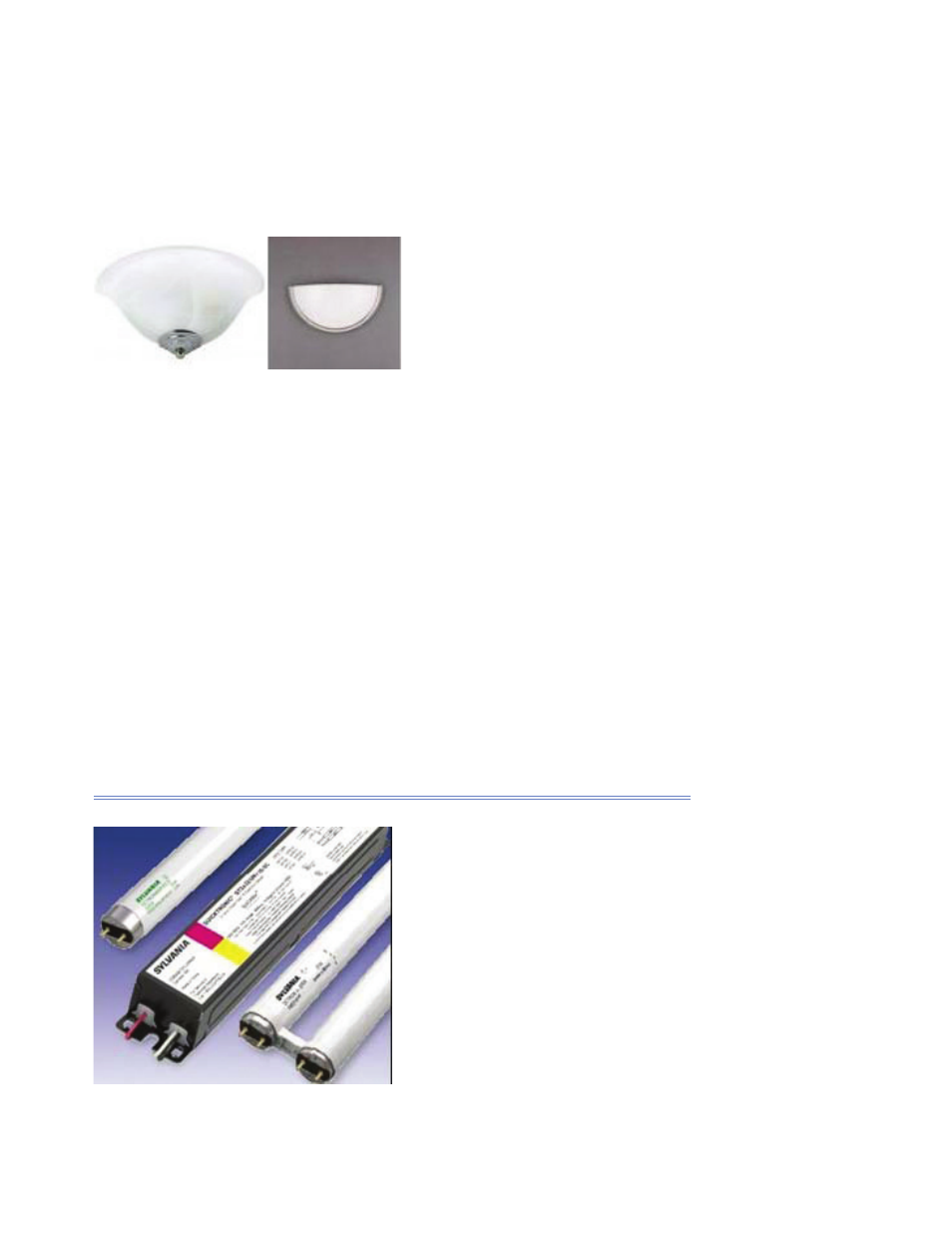Retrotec USACE User Manual
Page 223

Appendix D D93
of incandescents. Higher color temperature CFLs are also available that
can match the general fl uorescent lighting within the space. In addition to saving
energy, CFLs offer longer lamp life, in most cases lasting 10 times longer than
incandescents. Longer lamp life results in fewer replacements, reducing operating
costs on top of the energy benefi ts. Furthermore, fewer replacements reduces en-
vironmental impact—fewer lamps in landfi lls and less overall mercury released.
Figure D148. Incandescent wall sconce (left)
and fl uorescent wall sconce (right).
For retrofi ts, to maintain effective lighting system performance, replace
incandescents with CFLs that approximate the lumen output of the existing
incandescent. A good rule of thumb is to assume a factor of ¼ when estimating
lumen output from power consumption—i.e., replace a 60 W incandescent
with a 15 W CFL. When retrofi tting downlights, ensure that the total fi xture
effi ciency and photometric distribution of the fi xture with the replacement
CFL is similar to that of the existing incandescent. For existing table lamps and
fl oor lamps that use medium-based sockets, look for screw-in CFL replace-
ments that will fi t in the fi xture to replace incandescent lamps—there are many
models available that include both three-way and dimming capabilities.
In new construction, use compact fl uorescents wherever incandescent
lamps would normally be specifi ed. For example, insist on CFL sconces in-
stead of incandescent sconces. Many manufacturers offer lighting fi xtures that
have optional CFL lamping options.
D.5.8 Using Older T8 Fluorescent Lamps and Electronic Ballasts
(Ineffi ciency)
Figure D149. Higher-effi ciency (premium)
ballasts.
T8 fl uorescent lamps and electronic ballasts that were installed between 1990
and 2002 are good candidates for retrofi t. The latest generation of T8 lamps
